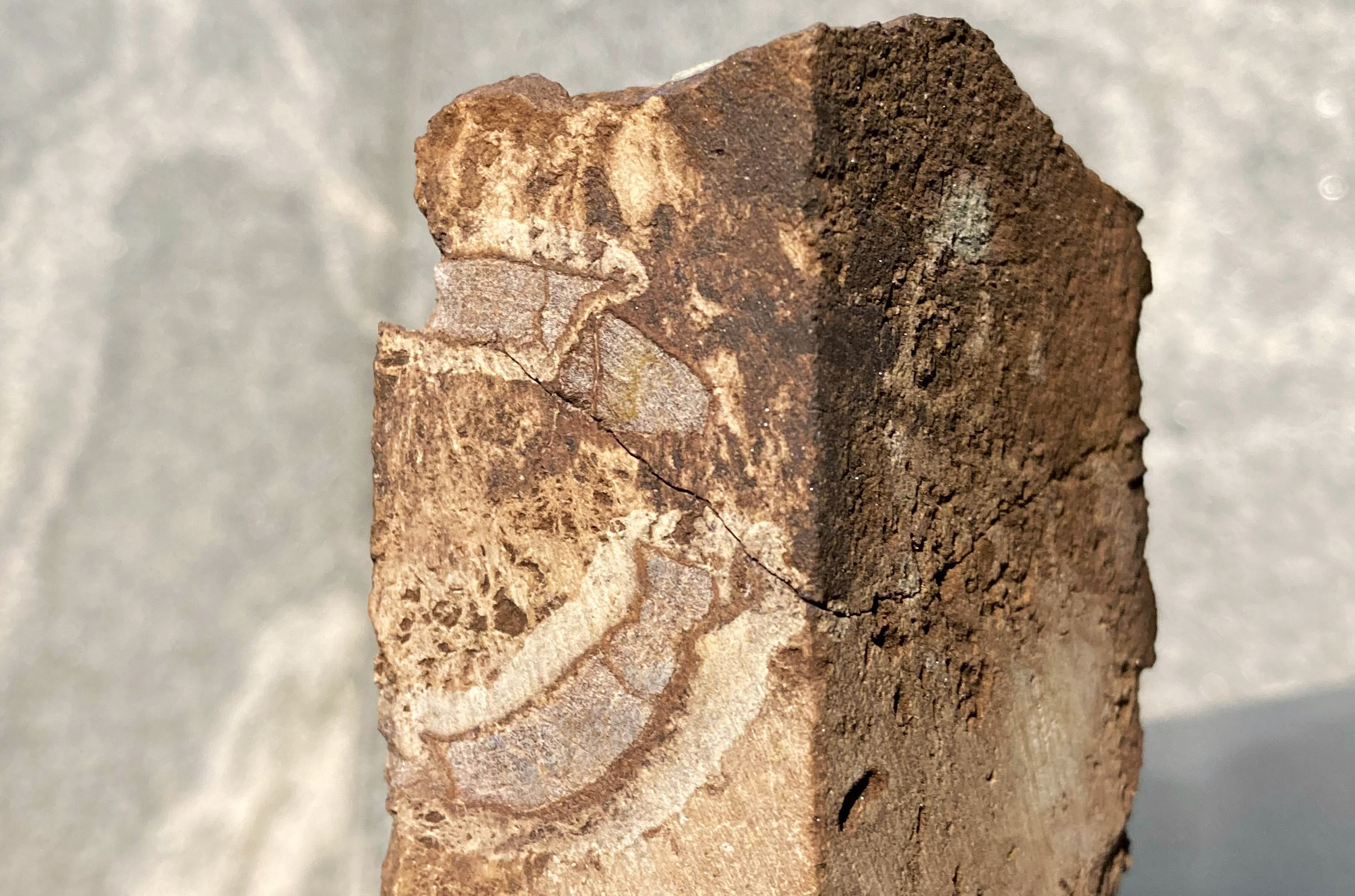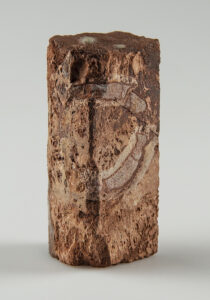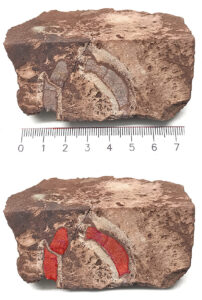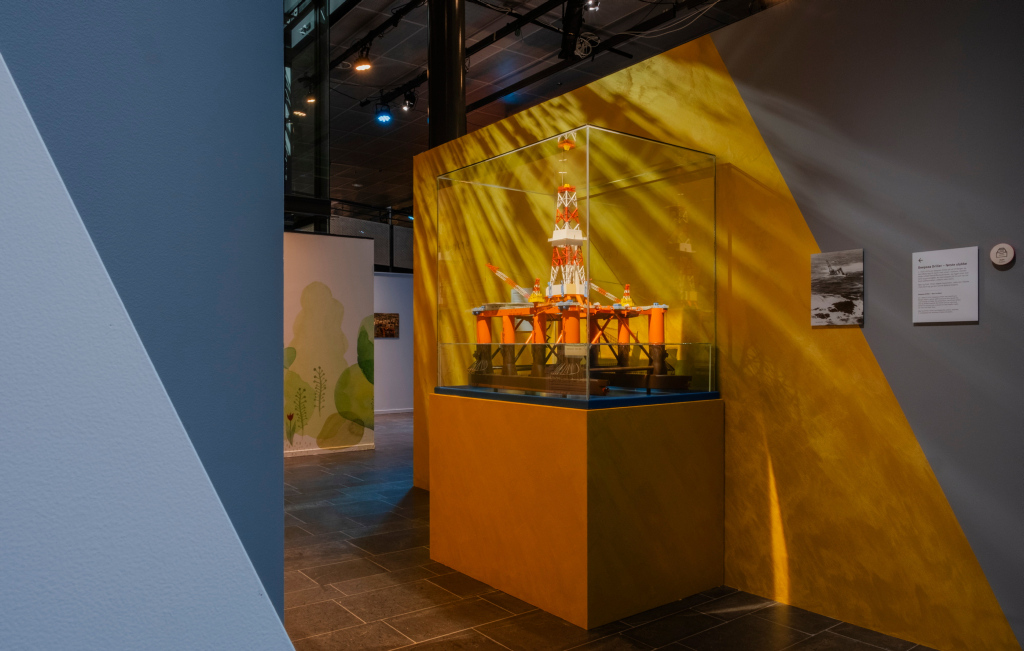Norway’s first fossil dinosaur bone – and the deepest ever found – was recovered in 1997 on the Snorre field in the North Sea and is now on display in the Witnessing Oil exhibition.
The geologists were astonished to discover the remains of grey-white bone in a rock core brought up from a well on the field. More detailed analysis established that it came from a Plateosaurus dinosaur.
Part of this core containing the bone, which is about four centimetres long, has been loaned to the Norwegian Petroleum Museum for the exhibition. It comes from the Norwegian Petroleum Directorate, which stores cores from many wells on Norway’s continental shelf.
Geologists Morten Bergan and Johan Petter Nystuen spotted the fossil bone while analysing the lowest section of the core from well 34/4-9S. They were working at the time for former oil company Saga Petroleum. Equinor is now the operator for Snorre, which lies in the Tampen area of the northern North Sea.
Just imagine it: a drill bit specially designed to take cylindrical rock samples from a well chewed its way down through the various sub-surface strata and encountered the remains of an animal in rocks from the Late Triassic.
The likelihood of coming across a bone deep beneath the North Sea is vanishingly small, but it happened here, at a depth of roughly 2 590 metres. That’s the equivalent of walking from the Breiavatnet lake in central Stavanger to the Mosvatnet lake further out.
After the rock core was retrieved to the surface, the geologists conducted their initial analyses and were immediately convinced that it contained an animal fossil. But it took a couple of years to identify the species concerned.
Triassic rocks are formed by sediments and plant remains deposited 250-200 million years ago during oldest period of the Earth’s middle age – the Mesozoic.
Bone cells give the answer
Prehistoric marine reptiles have been found in a number of locations in the North Sea as well as in Andøya in northern Norway and Svalbard. Until the usual fossil bone turned up on Snorre, however, no Norwegian dinosaur discoveries had been made – apart from some footprints in Svalbard.
Which animal the fossil bone came from was first clarified a couple of years later when the geologists brought in Jørn Hurum, a dinosaur specialist who works for the Natural History Museum at the University of Oslo.
He analysed thin slices taken from the fossil, identified clear cell structures from bone, and saw that they matched a pattern found only in dinosaurs. In addition, he linked the discovery to studies made by German scientists. The cells in the Snorre bone have the same structure as those found in Germany.
With the timing also right, the conclusion was clear – the fossil derives from an individual of the Plateosaurus species, which lived some 210-195 million years ago in the Late Triassic. It is a small portion of a leg or forearm.
Herbivore
Plateosaurus belonged to an earlier variant of the “long-necked” dinosaurs, which fed on plants which grew in their day. They probably spent most of their time on four legs, but could also rear up on two in order to reach vegetation higher up.
Fossil Plateosaurus skeletons have been discovered at more than 50 different Europe sites as well as in Greenland, which lay close to Norway during the Triassic.
This fossil bone from a Plateosaurus in the rock core was retrieved in 1997 on the Snorre field in the North Sea.
The fossil bone is highlighted in red.
Read more:
Visit the dinosaur exhibition















